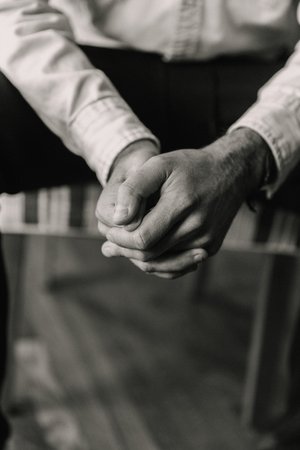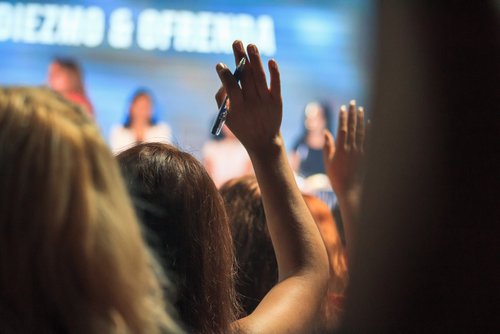Pansexuality, a term that may not be as widely understood as others, holds significance in the realm of sexual identities. This article aims to shed light on the intricacies of pansexuality, exploring its definition, the spectrum it encompasses, and the common misconceptions that surround it. By gaining a better understanding of pansexuality, we can foster a more inclusive and knowledgeable society that embraces the diversity of human sexuality.
Introduction to Sexuality: Understanding the Basics
Sexuality is an integral and natural part of being human, encompassing a wide range of attractions, desires, and identities. Before delving into the specifics of pansexuality, it is essential to establish a foundation by understanding the basics of sexuality.
The Biological and Psychological Aspects of Sexuality
Sexuality is not solely determined by biological factors but is also influenced by psychological and social elements. Biologically, sexual attraction is intricately linked to reproductive instincts and the release of hormones. However, the complexities of human sexuality go beyond mere procreation.
The Concept of Sexual Orientation
Sexual orientation refers to an individual’s enduring pattern of emotional, romantic, and sexual attractions towards others. It is an inherent aspect of a person’s identity and is not subject to change or choice. The commonly recognized sexual orientations include heterosexual (attraction to the opposite gender), homosexual (attraction to the same gender), and bisexual (attraction to both genders). However, there are additional sexual orientations that deserve attention, one of which is pansexuality.
The Social Construction of Sexuality
Sexuality is a social construct that is shaped by cultural norms, societal expectations, and historical contexts. It is important to recognize that societal attitudes towards sexuality have evolved over time, with increased understanding and acceptance of diverse sexual orientations and identities. However, there is still much progress to be made in terms of education and dispelling misconceptions.
The Importance of Understanding and Respect
In order to foster a more inclusive society, it is crucial to develop an understanding and respect for all sexual orientations. By acknowledging the diversity of human sexuality, we can create safer spaces where individuals can freely express their identities without fear of judgment or discrimination.
With a solid understanding of the basics of sexuality, we can now dig deeper into the concept of pansexuality and explore its unique characteristics and significance in the larger spectrum of sexual orientations.
Defining Pansexuality
Pansexuality, as a sexual orientation, is often misunderstood or overlooked due to the dominance of more commonly known orientations like heterosexual, homosexual, and bisexual. In this section, we will explore the definition of pansexuality, its etymology, and how it differentiates itself from other sexual orientations.
Etymology of Pansexuality
The term “pansexuality” derives from the Greek word “pan,” meaning “all” or “every,” and the Latin word “sexus,” meaning “sex” or “gender.” Coined in the early 1970s, the term was introduced to describe a sexual orientation that transcends traditional gender boundaries.
The Core Definition
At its core, pansexuality refers to the potential for attraction to individuals regardless of their gender identity or biological sex. Pansexual individuals are attracted to people based on their personality, emotional connection, and other factors that go beyond gender. This means that pansexual individuals can be attracted to cisgender men or women, transgender individuals, genderqueer or non-binary individuals, and anyone who identifies along the gender spectrum.
Differentiating Pansexuality from Other Sexual Orientations
Pansexuality is often confused with bisexuality, but there are important distinctions between the two orientations. While bisexuality refers to attraction to both males and females, pansexuality expands beyond the gender binary and includes attraction to all genders. Pansexuality emphasizes that gender is not a determining factor in attraction, focusing instead on the individual’s essence and connection.
Additionally, pansexuality is not a phase or a waystation on the journey to identifying as another sexual orientation. It is an independent and valid orientation that should be recognized and respected.
By understanding the definition of pansexuality and its differentiation from other sexual orientations, we can begin to appreciate the nuances and complexities of this unique orientation. In the following sections, we will explore the spectrum of pansexuality, the fluidity it encompasses, and the importance of intersectionality in understanding pansexual identities.
The Spectrum of Pansexuality
Pansexuality exists on a spectrum, encompassing a wide range of experiences and expressions of attraction. In this section, we will explore the different aspects of the pansexual spectrum, including who can be identified as pansexual, the fluidity of pansexuality, and the significance of intersectionality in understanding pansexual identities.
Who Can be Identified as Pansexual
Pansexuality is an inclusive sexual orientation that can be embraced by individuals from diverse backgrounds and identities. Pansexual individuals are attracted to people of all genders, recognizing and valuing the full spectrum of gender identities. This includes but is not limited to cisgender men and women, transgender individuals, genderqueer or non-binary individuals, and those who identify along the gender spectrum. Pansexuality acknowledges that love and attraction transcend the confines of traditional gender roles.
The Fluidity of Pansexuality
One of the defining features of pansexuality is its fluid nature. Pansexual individuals may experience shifts in their attraction over time, as their understanding of their own identity and preferences evolves. This fluidity allows for a more nuanced and dynamic experience of attraction, where individuals are not limited by rigid categorizations.
Intersectionality and Pansexuality
Intersectionality plays a crucial role in understanding pansexual identities. Pansexual individuals may navigate various intersecting aspects of their identity, such as race, ethnicity, religion, disability, and socioeconomic background. Recognizing the complexity of these intersections is vital in addressing the unique challenges and experiences faced by pansexual individuals from diverse communities.
Understanding the spectrum of pansexuality helps us appreciate the diverse range of attractions and experiences that individuals may have. By acknowledging the fluidity of pansexuality and embracing intersectionality, we can create a more inclusive and supportive environment for pansexual individuals. In the following sections, we will address common misconceptions and stereotypes surrounding pansexuality, aiming to dispel myths and promote greater understanding.
Common Misconceptions and Stereotypes about Pansexuality
Despite the progress made in understanding and accepting diverse sexual orientations, pansexuality continues to be subject to misconceptions and stereotypes. In this section, we will address some of the common misunderstandings and stereotypes surrounding pansexuality, aiming to dispel myths and promote a more accurate understanding.
Dispelling Myths
- Pansexuality is not a phase: One common misconception is that pansexuality is a temporary stage or a stepping stone to identifying as another sexual orientation. However, it is important to recognize that pansexuality is a valid and enduring orientation.
- Pansexuality is not a result of confusion: Another myth suggests that pansexual individuals are confused about their own sexuality. This assumption undermines the legitimacy of pansexuality and ignores the fact that individuals can confidently identify as pansexual.
- Pansexuality does not equate to promiscuity: A prevailing stereotype suggests that pansexual individuals are inherently promiscuous or unable to maintain long-term relationships. This generalization is unfounded and perpetuates harmful stereotypes.
Addressing Stereotypes
- Pansexuality is not a “preference” or a fetish: Some people may mistakenly believe that pansexual individuals view gender as a fetish or have a preference for specific gender identities. However, pansexuality is about recognizing and valuing all genders equally, rather than having a specific preference.
- Pansexuality is not about being attracted to everyone: It is a misconception that pansexual individuals are attracted to every person they encounter. Like any sexual orientation, attraction is subjective and based on personal preferences and connections.
- Pansexuality is not a form of bisexuality: While pansexuality and bisexuality share similarities, they are distinct orientations. Pansexuality encompasses attraction to all genders, acknowledging the full gender spectrum, while bisexuality refers to attraction to both males and females.
Overcoming Misunderstandings
To overcome these misconceptions and stereotypes, it is crucial to educate ourselves and promote accurate information about pansexuality. This can be achieved through open dialogue, sharing personal experiences, and promoting inclusivity and acceptance. By challenging stereotypes and fostering understanding, we can create an environment where pansexual individuals are respected and celebrated for their unique identities.
In the following section, we will explore ways in which we can promote acceptance and understanding of pansexuality, advocating for awareness, support, and inclusivity.
Promoting Acceptance and Understanding of Pansexuality
Promoting acceptance and understanding of pansexuality is crucial in creating a more inclusive society. In this section, we will explore various strategies and initiatives that can be undertaken to foster awareness, support pansexual individuals, and promote inclusivity and representation.
Promoting Awareness and Education
- Education in schools: Incorporating comprehensive sexuality education in schools can help dispel misconceptions about pansexuality and foster a more inclusive environment. This education should include information about different sexual orientations, including pansexuality, and address any questions or concerns students may have.
- Public awareness campaigns: Engaging in public awareness campaigns can help raise visibility and understanding of pansexuality. These campaigns can include online and offline initiatives, such as social media campaigns, community events, and workshops.
- Collaboration with organizations: Collaborating with LGBTQ+ organizations and advocacy groups can be beneficial in raising awareness about pansexuality. By partnering with these organizations, we can leverage their expertise and resources to reach a wider audience.
Supporting Pansexual Individuals
- Creating safe spaces: Establishing safe spaces, both online and offline, where pansexual individuals can connect, seek support, and share their experiences, is crucial. These spaces can include support groups, online forums, or LGBTQ+ community centers.
- Mental health support: Recognizing the unique challenges faced by pansexual individuals, it is important to provide accessible mental health support. This can include counseling services that are sensitive to the specific needs and experiences of pansexual individuals.
- Intersectional support: Acknowledging and addressing the intersecting identities of pansexual individuals is essential. Providing resources, support, and advocacy for pansexual individuals who may also face discrimination based on their race, ethnicity, disability, or other intersecting identities is crucial for fostering inclusivity.
Inclusivity and Representation
- Media representation: Encouraging diverse and accurate representation of pansexual individuals in media, including television, film, and literature, helps normalize their experiences and challenges stereotypes.
- Celebrating pansexual voices: Amplifying the voices of pansexual individuals by providing platforms for them to share their stories and experiences can help break down barriers and promote understanding.
- Allyship and solidarity: Allies play a vital role in promoting acceptance and understanding of pansexuality. Allies can educate themselves, challenge stereotypes, and actively support the rights and well-being of pansexual individuals.
By actively promoting acceptance and understanding of pansexuality, we can create a society that celebrates diversity and embraces the unique experiences of pansexual individuals. In the concluding section, we will summarize the key points discussed and emphasize the importance of embracing diversity in all forms of sexual orientation.
Conclusion: Embracing Diversity in Sexual Orientations
In conclusion, understanding pansexuality is essential for creating a more inclusive and accepting society. Throughout this article, we have explored the definition of pansexuality, its spectrum, and the common misconceptions that surround it. We have highlighted the importance of recognizing pansexuality as a valid and enduring sexual orientation, separate from other orientations such as bisexuality.
By embracing the diversity of sexual orientations, including pansexuality, we can foster a society that respects and celebrates the full spectrum of human attraction. It is crucial to dispel myths and stereotypes surrounding pansexuality, promoting accurate information and understanding. Education, public awareness campaigns, and collaboration with LGBTQ+ organizations play a significant role in achieving this goal.
Supporting pansexual individuals is equally important. Creating safe spaces, providing mental health support, and acknowledging intersectionality are key steps in ensuring the well-being and inclusivity of pansexual individuals. By amplifying their voices and promoting representation in media, we can challenge societal norms and break down barriers.
Ultimately, promoting acceptance and understanding of pansexuality requires active allyship and solidarity. Allies have a crucial role to play in educating themselves, challenging stereotypes, and advocating for the rights and well-being of pansexual individuals.
Let us strive towards a future where all sexual orientations are celebrated and embraced. By embracing diversity in sexual orientations, we can create a world that respects and values the full range of human experiences and identities.


















